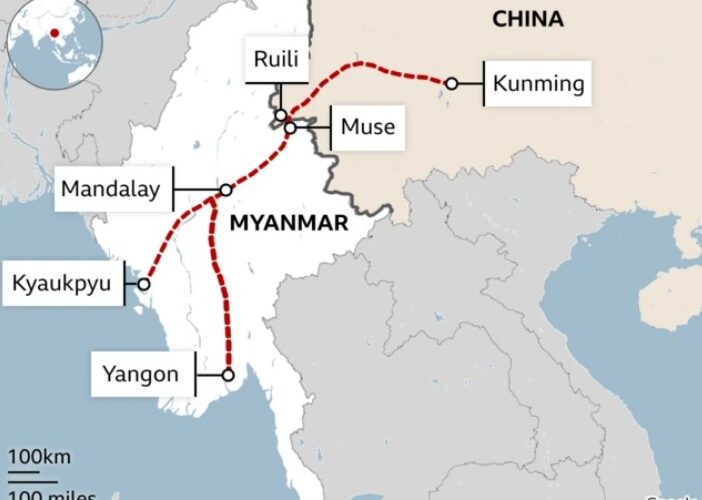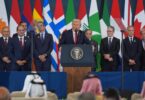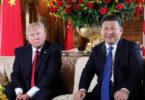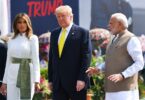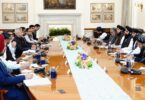In July 2025, Myanmar’s military junta lifted the emergency paving the way for elections. While preparations are on for the elections to be held within next six months (no date announced), opposition groups plan to boycott the elections. The junta declared a state of emergency in February 2021; deposing the civilian government headed by Aung San Suu Kyi that resulted in a civil war claiming thousands of lives.
A 2024 census, as prelude to elections, failed to collect data from 19 million of the 51 million population of Myanmar citing significant security constraints as one reason for the shortfall. Analysts predict rebel offensives around the election, while the junta has announced cash rewards to those willing to lay down their arms and "return to the legal fold" ahead of the vote, as well as enacting a law dictating prison sentences up to 10 years for speech or protests aiming to destroy a part of the electoral process. Currently 60-200 armed groups are active in Myanmar - overall numbering between 1,50,000 to 3,00,000.
The thin resistance in urban areas of Myanmar converges with the rural/ethnic insurgencies. In northern Shan State, the Brotherhood Alliance (Ta’ang National Liberation Army, Myanmar National Democratic Alliance Army, and Arakan Army) has routed junta forces. In the central zone, largely ethnic Bamar Peoples’ Defence Force (PDF) operate, blending guerrilla tactics with local self-rule when the Tatmadaw (Myanmar military) are absent. Overall, there is an uneasy alliance - the National Unity Government (NUG).
Myanmar is China’s strategic highway to the Bay of Bengal. The China-Myanmar-Economic Corridor (CMEC) and the deepwater Port of Kyaukpyu has the same strategic importance for China as the China-Pak-Economic Corridor (CPEC) and the port of Gwadar in Pakistan. The interests of both China and the US coalesce in stymying Indian influence in Myanmar but the US equally aims at checkmating Chinese influence in the region. Therefore, the Western support and supplies to the PDF in Myanmar, including training by veteran US marines was coming intermittently in yesteryears.
In October 2023, the Three Brotherhood Alliance, comprising the Arakan Army (AA), the Ta’ang National Liberation Army (TNLA) and the Myanmar National Democratic Alliance Army (MNDAA), launched a coordinated attack on the Tatmadaw, police, and defence installations along the Chinese border resulting in major successes to the rebels. Eventually, the US focus shifted to the AA which had first established a base in Rakhine State in 2014. Concurrent to the CIA-engineered regime change in Bangladesh, the US wanted Bangladesh to open a logistics and drone support corridor to the AA in Myanmar. The AA with a strength of about 45,000, including about 13,000 in Rakhine and Chin states, controls almost all of Rakhine State and about 40% of Chin State.
An FBI team visited Bangladesh within a week of the regime change. Bangladesh army chief General Waker-Uz-Zaman also visited Washington and was briefed at the Pentagon. Bangladesh-US military exchanges began – same as Bangladesh-Pakistan military-ISI exchanges. On August 31, 2025, Terrence Arvelle Jackson, senior veteran USSF officer, supposedly on a business trip (?), was found dead in Westin Hotel, Dhaka.
On September 10, 2025, about 120 officers of the US Army and USAF landed in Chittagong and checked into 85 pre-booked rooms at the Radisson Blu Hotel. They are reportedly to participate in a joint Bangladesh-US exercise. Previously, US forces have participated in two joint exercises with the Bangladesh Army. Earlier, there were reports of Pakistan army training the Bangladesh army in four cantonments in Bangladesh. Radical Islamist terrorists’ leaders of Bangladesh and Pakistan have been visiting each other and holding discussions. Notably, a group of Bangladeshi terrorist leaders are presently on a visit to Kabul.
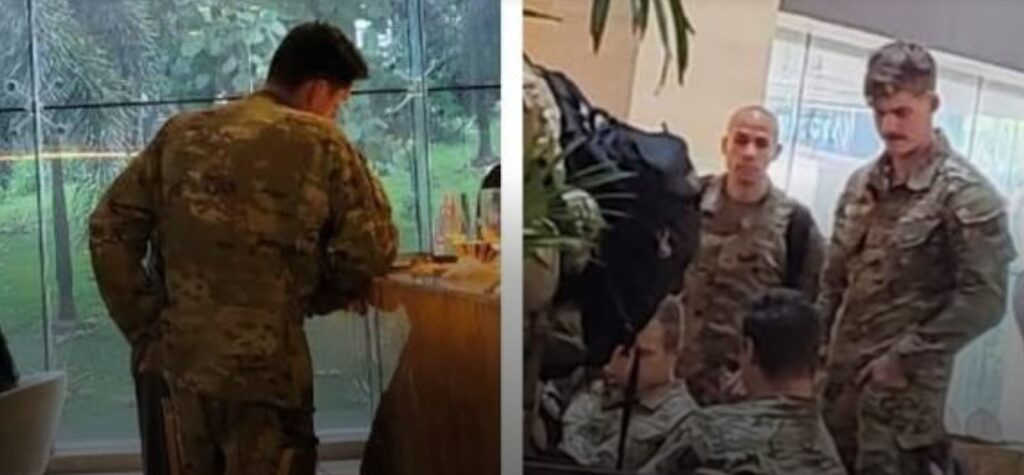
Unconfirmed reports suggest that the US has stored uniforms, protective armour, armoured military vehicles, radar equipment, medical equipment, and supplies in Bangladesh for supplying to the rebels in Myanmar. The Bangladesh army has been resisting the US demand to supply these across its border with Myanmar. Whether the US can still prevail upon Bangladesh, remains to be seen with Bangladesh Chief Advisor Mohammad Yunus (known American mascot) telling the EU Parliament that “certain forces” want the elections scheduled in February 2026 to be delayed.
Then came a recent twist in US-Myanmar relations, with Trump eyeing the Rare Earth Minerals (REE) in Myanmar. On July 24, 2025, the US lifted sanctions on several individuals and companies tied to Myanmar's military junta, including KT Services & Logistics, the MCM Group, Suntac Technologies, and Tin Latt Min. Trump has demonstrated he would drool over REEs any place anytime; with America dependent on China for nearly three-quarters of its REE imports.

China has been arming both the Tatmadaw and the rebel groups. Not only has it armed the United Wa State Army (UWSA) to the teeth, including with missile-fitted attack helicopters, armoured vehicles, shoulder-fired AD missiles, to retain a stranglehold on Myanmar, Beijing has been arming and extending support to most ethnic armed groups located along Myanmar’s northern border with China who can interfere effectively with CMEC, as well as CMEC’s terminal point Kyaukphyu in the Rakhine State. Beijing’s nexus with Myanmar’s insurgents in Kachin State’s unregulated mining hubs has kept China firmly ahead in the global REE race. According to a March 2025 report by the Institute for Strategy and Policy (ISP), Myanmar, 240 plus REE sites (two-third of total in Myanmar) came up in Kachin State after the military junta imposed emergency in February 2021. In the same period, China imported 170,000 tons of REEs from Myanmar.
For India, the strategic importance of Myanmar as the gateway to the East and its Act East Policy (AEP) is cosmic. According to a Reuters report of September 10, 2025, quoting unnamed sources, India’s Ministry of Mines has asked both state-run and private companies to collect and transport REE samples from Kachin Independence Army (KIA)-controlled mines in northeastern Myanmar. The report also added that the insurgent outfit had already begun gathering samples for New Delhi and had agreed to evaluate the feasibility of bulk rare earth exports to India. India’s State-owned miner IREL and private firm Midwest Advanced Materials (which received government funding in 2024 for commercial manufacturing of rare-earth magnets) are involved in the discussions with the KIA. New Delhi hopes to test the REE samples in domestic labs to ensure they contain sufficient levels of heavy rare earths that can be processed into magnets used in electric vehicles and other advanced equipment.
Prime Minister Narendra Modi reportedly met junta chief Min Aung Hlaing on the sidelines of the SCO Summit in Tianjin (China) to discuss defence, security, border management and trade. With the mines located on the Chinese border, it would be extremely difficult for the KIA, which now controls the mines, to transport the significant quantities of REEs close to the border in Arunachal Pradesh – a logistical nightmare. Moreover, China can be expected to prevent the REEs going to India. A spokesperson for China’s Foreign Ministry said in response to Reuters’ questions that Beijing was not aware of the KIA potentially working with India, but “all relevant parties in northern Myanmar appreciate and thank China for its constructive role in maintaining peace and stability in the region. Interestingly, at the recent Taiwan Expo 2025 held in New Delhi, Keven Cheng, Deputy Director of TAITRA (Taiwan External Trade Development Council), told the media that Taiwan is eager to source REEs from India to fuel its high-tech industries, from electric vehicles to renewable energy and defence manufacturing.
On September 12, 2025, Lt. Gen, Ko Ko Oo, Commander, BSO-1 of the Myanmar Army, heading a four-member delegation, visited India’s HQ Eastern Command, Kolkata to participate in the 7th Army-to-Army Staff Talks (AAST) between India and Myanmar. The two sides discussed measures to deepen defence cooperation, particularly in cutting-edge technology, with an emphasis on ensuring mutual security. The Indian side reiterated its support for initiatives to strengthen the Myanmar Army’s digital training capabilities and improve information management within its organisation. Later, the General Officer also visited New Delhi, Agra, and Gaya. The visit further cemented the longstanding friendship between the two armies, underscoring India’s commitment to fostering close defence ties with Myanmar while contributing to regional peace and stability.
Finally, the China-US Great Game is on in Myanmar, with India advancing its own strategic interests. What happens in the run up to elections, possibly in December 2025/January 2026 and beyond, with how much violence in store, remains to be seen. But the repatriation of Rohingyas from India and Bangladesh to Myanmar will likely get deprioritized. At the same time, while Bangladesh is recruiting and training Rohingyas for operations in India, it remains unclear how the US plans to mount more pressure on India through Bangladesh.
The author is an Indian Army veteran, Views expressed are personal.



